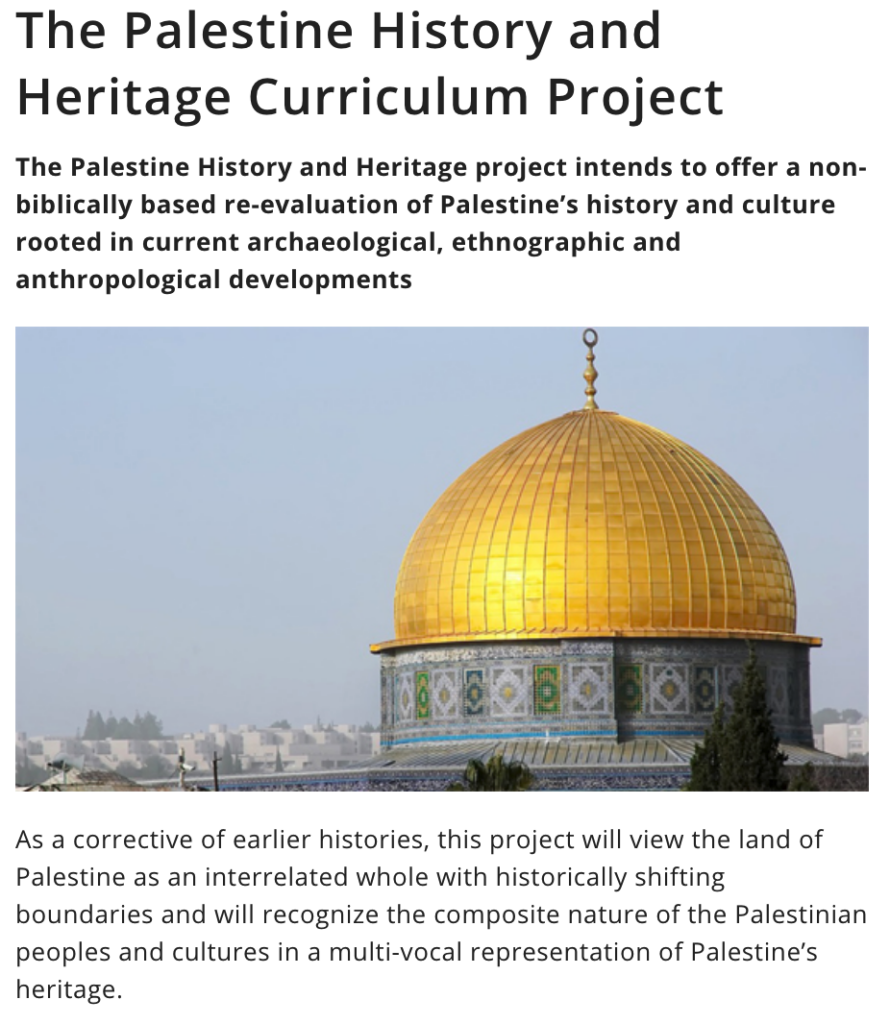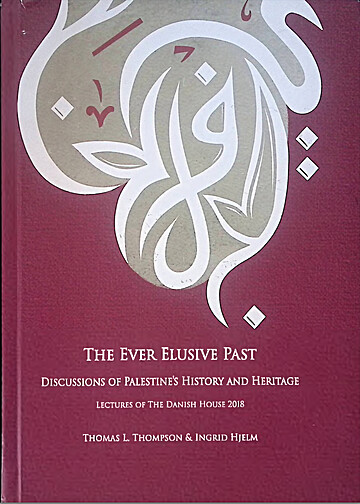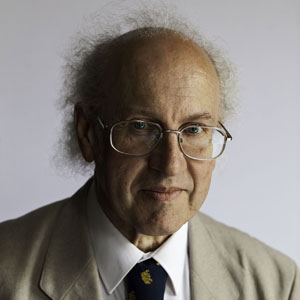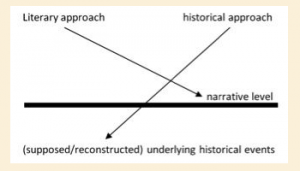
The reason my posts relating to Biblical questions so often express a view that is inconsistent with mainstream narratives has nothing to do with wanting to be different (as the moderator on the earlywritings forum has patronizingly insisted) but everything to do with examining the evidence according to the same methods that are accepted as normative best-practice in other fields of history and classical studies. It was for this reason — identifying what I considered a fundamentally sound method of research and interpretation of evidence — that attracted me to the methods of what is sometimes (and dismissively) termed “minimalism” in explorations of the origins of Judaism, Christianity and the Bible.
So I feel a little reassured when I read that the same so-called “minimalist” authors themselves acknowledge that their approach is nothing other than what is considered uncontroversial in other areas of historical studies. It is only controversial, it seems, in the context of biblical studies — for reasons not hard to fathom. It is even more reassuring and encouraging to see that some of the “minimalist” scholars have taken practical steps to change the way Palestine’s history is understood more generally and taught in Palestinian schools and universities. Given the current ongoing slaughter of Palestinians in Gaza by the IDF it is very difficult to conceptualize anything positive for the future in Palestine-Israel, so one does hope that the candle-flame of The Palestine History and Heritage Project (PaHH) will not be fully extinguished.
The methods — doing history the way other historians are expected to do it
The PaHH project follows research principles set forth in the Copenhagen School’s insistence on producing clear methodological and epistemological evidence based historiography, such as is required in classical history writing, and rejecting the biblical-archaeologically designed history of “ancient Israel” most often presented in historiographies of ancient Palestine. (Hjelm 15)
In short, the only legitimate method of finding out “what really happened” in the past is to begin with primary evidence, the evidence from the time and place being studied. If we have much later narratives, accounts, myths, we don’t by default reject them as “lies” but we do examine them and try to trace their origins according to the culture that produced them. And that originating culture has to be determined by independent evidence. We cannot simply assume that a story about King David (or King Arthur for that matter) originated in the time of King David or King Arthur. The only legitimate method demands that we do not mix up the two types of sources. We don’t use Homer’s epics to learn about the historical Helen of Troy, nor Walter Scott’s novels to learn about the historical King Richard and Robin Hood, nor should we use the Bible’s stories to inform us about events that are known to have happened centuries before the Bible’s books were written.
The application of what I call normative historical method to the “history of Israel” has led to some considerable heat:
This has even been the case in the non-theological Biblical Criticism & History Forum – earlywritings.com as I mentioned in relation to my own experience there when attempting to discuss the case for the Bible originating later than the Babylonian exile.The debate cemented the minimalist-maximalist positions with accusations of ‘revisionism’, ‘anti-semitism’, ‘anti-zionism’, ‘anti-biblical’, and ‘nihilism’, on one side, and ‘fundamentalism’, ‘evangelism’[sic] and ‘bad scholarship’ on the other side. Moving from the discussion of methods in history writing which had been the focus of scholarship since the deconstructionist tendencies of the ‘60s-‘80s, the Bible’s role as witness to its own histories, rather than its ancient mental history, became the primary issue. It became almost “illegitimate” not only to deny or criticize the Bible’s historicity, but also to discuss its origin later than the Babylonian Exile, although the Dead Sea Scrolls had made it absolutely evident that no Hebrew Bible existed that early. The approach taken by the so-called “minimalists” is, however, a basic demand in scientific history writing and is called for if biblical scholars are to be included in the guild of historians. Rather than being the ideologically driven program of a small group it has been adopted, to some extent, ‘by a fairly large number of scholars in response to the collapse of “biblical archaeology”, and the absolute necessity of reconsidering the way in which archaeological data and biblical texts are best related in the search for a critical history’. (Hjelm 50)
The content — imagining a non-biblical history of Palestine
Biblical-influenced history of Palestine or Israel is not limited to evangelicals. But I hope by the time interested readers reach the end of this post they will recognize the need to move beyond our common Bible-influenced histories.
Biblically based history does not only feature in histories written by biblical scholars, but is common in writings by archaeologists and historians alike. (Hjelm 15)
Ingrid Hjelm adds examples to demonstrate what that statement covers, some of which no doubt many readers will at least have seen referenced in online discussions:
- W. G. Dever, What Did the Biblical Writers Know and When Did They Know It? What Archaeology Can Tell Us about the Reality of Ancient Israel (Grand Rapids: Eerdmans, 2001);
- Israel Finkelstein and N. A. Silberman, The Bible Unearthed: Archaeology’s New Vision of Ancient Israel and the Origin of Its Sacred Texts (New York: The Free Press, 2001);
- P. Briant, From Cyrus to Alexander. A History of the Persian Empire (Winona Lake: Eisenbrauns, 2002);
- T.C. Mitchell, ‘The Assyrian and Babylonian Empires and Other States of the Near East from the Eighth to the Sixth Centuries’, in J. Boardman et al. (eds.), The Cambridge Ancient History. Sec. ed., vol. Ill, Part 2 (1991): 322-460;
- A. Kuhrt, The Ancient Near East. Vol. II, (London: Routledge, 1995);
- K. A. Kitchen, On the Reliability of the Old Testament (Grand Rapids: MI, Cambridge, U.K.: Eerdmans, 2003)
There is Israel and there is Palestine. Unfortunately, among many of us who have been immersed in a certain view of the Bible and history the term Palestine can easily conjure up images of the other, the outsider, the crude pagan destined to be supplanted, or other Orientalist visions of “the Arab” or even “Islamism”. But the term Israel is also problematic. As Philip R. Davies pointed out in 1992 we find ourselves with shifting images of three different Israels:
1. Historical Israel:
Historical Israel is the Kingdom of Israel / Bit Humri / House of Omri (9th century -720 BCE) — the kingdom that archaeologists have uncovered in the northern region of Palestine. It is known from Moabite and Assyrian inscriptions.
2. Biblical Israel:
Biblical Israel is the 12 tribe confederation, the United Monarchy, the Kingdoms of Israel and Judah, and the “Israelites” throughout history and tradition in the 2nd – 1st millennium BCE (Hjelm 16)
3. Ancient Israel:
Finally, the Ancient Israel perspective offers a harmonization of biblical traditions with archaeology and epigraphy and uses the name “Israel” indiscriminately of its historical use and verification. In regard to historical research, such traditional “ancient Israel” histories are oxymoronically neither biblical nor historical, but reductionist conflation of biblical myth and historical fact. (Hjelm 16)
See the above list of titles for examples of that kind of harmonization.
Where is there room for Palestine here? We know that Palestine is even denied as a legitimate name in itself by various extremist pro-Zionists and Islamophobes.
Imagining Palestine
Speaking of the Palestine History and Heritage Project, Hjelm explains:
We have chosen to use the term “Palestine” generally, because it is the most consistent name of the area stretching from as far north as Sidon to the Brook of Egypt and from the Mediterranean into the Transjordan with ever changing borders since the Iron Age. It is testified in inscriptions from Ramses III (ca. 1182-1151 BCE) with increased regional comprehension in the 12th-10th cent. BCE. From the neo-Assyrian period (10th-7th century BCE) onwards it is the most common etic collective designation, manifested in the Roman period (1st cent. BCE – 4th cent. CE), and it has been in continuous use until 1967, whence the name became a modern political term for areas that are not Israel or are occupied by Israel. Our use relates to the various meanings of the name throughout three millennia, in which many polities have co-existed, including the ancient kingdoms of Sidon, Ashkelon, Gaza, Gezer, Israel, Judah, Edom, etc. in addition to later Assyrian, Babylonian, Persian, Hellenistic, Roman and Byzantine provinces and the imperial polities established from conquests by Sassanid Persians, Arab (peninsular) tribes, crusading Europeans, Mamelukes, Seljuks, Ottoman Turks and the British Commonwealth. (Hjelm 10f)
That image reduces the notion of the above three Israels to passing visions in a kaleidoscope of richly varying histories. Certainly a study of “historical Israel” (the first of the three listed above) is a necessary undertaking for anyone who wants to understand the Bible — if only to come to appreciate that the Biblical Israel cannot be identified with the historical Israel. In other words, before studying the Bible’s view of history one would do well to study history on its own terms first. Instead of seeing cultures and today’s descendants of past eras through biblical lenses we would do well to study those cultures and descendants in their own right first.
Palestine is much bigger than “biblical Israel”. A study of Palestine embraces a study of other great city states that dominated the region at various times yet which the Bible only alludes to with a passing or a negative glance, if at all.
Nor is its history limited to a few centuries in ancient times followed by a “dark age” of early Christian and Islamic domination only to be “liberated” and “revived” in 1948 or especially in 1967 with the seizure of Jerusalem — again as the highlighted portion of the above quotation demonstrates.
The relevance of the PaHH must go without saying though I think it must be said at this time, however hard that saying is.
The Palestine History and Heritage Project (PaHH)
The Palestine History and Heritage Project (PaHH) was formed in 2014 with the twofold aim at producing a trustworthy history of Palestine and of offering this history as a basis for the production of new school textbooks which may reflect Palestine’s multi-vocal and multi-facetted history in a form that is scholarly evidence based rather than rooted in traditional religious interpretation.
PaHH is an international and interdisciplinary project, at present counting some 40 members (half of whom are academically situated in the Middle East or are of Middle Eastern origin) related to or working at academic institutions in Palestine, Europe, Africa, and North and South America.
The initiative to form the project came from Dr. Thomas L. Thompson and Dr. Niels Peter Lemche of the University of Copenhagen; Dr. Hamdan Taha, Former Director of the Department of Antiquities and Cultural Heritage, Palestinian Authority; Dr. Ilan Pappe, Director of the Institute of Palestine Studies, University of Exeter; Dr. Issa Sarie, Head of the Archaeological Department, Al Quds University, Abu Dis; and Dr. Basem Ra’ad, the University of London.
The project has been housed at the Faculty of Theology at the University of Copenhagen, with me as project leader until 2017, Dr. Mahmoud Issa as project coordinator and Thomas Thompson as project developer. Although we are now all retired, the faculty has accepted to keep the relationship and non-economic support. Over the years, the project has been funded by minor Danish and British funds to cover workshop and conference expenses. In addition, many Palestinian educational institutions have graciously hosted parts of our workshops and invited us for lectures and discussions. (Hjelm 9f)
Thompson, Thomas L., and Ingrid Hjelm. The Ever Elusive Past: Discussions of Palestine’s History and Heritage. Ramallah, Palestine: Dar Al Nasher, 2019.





